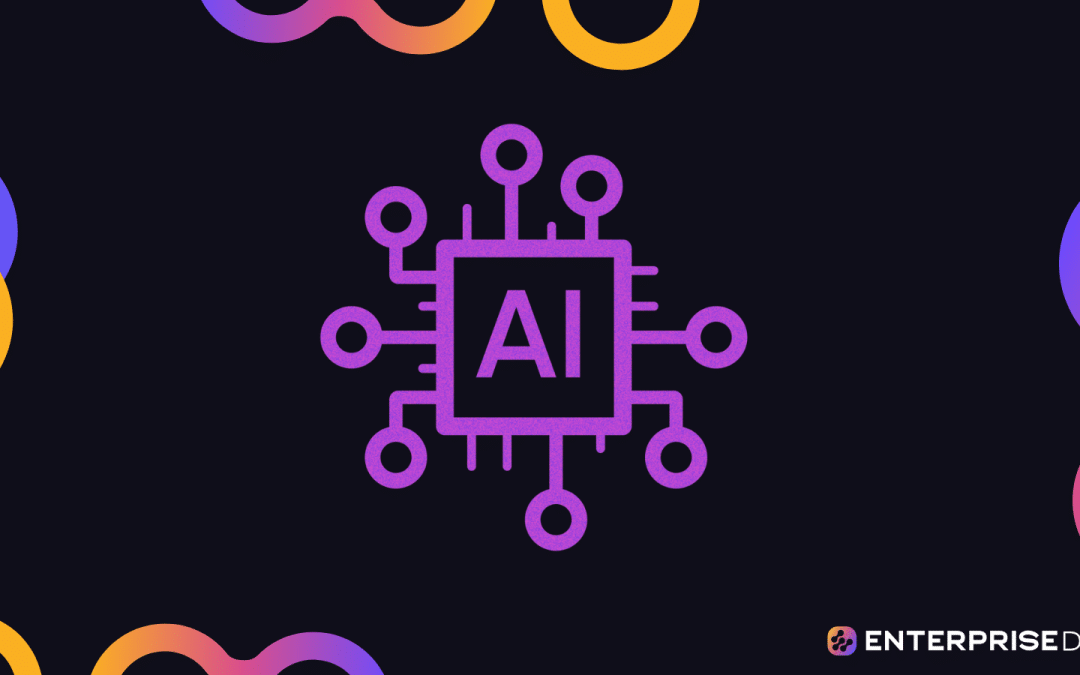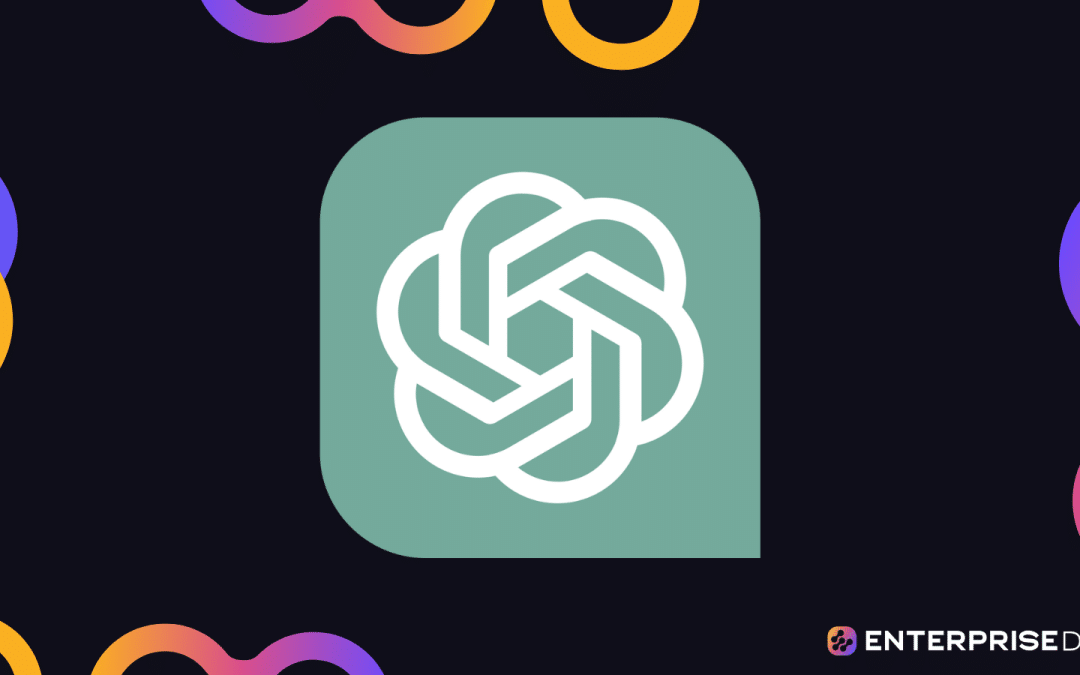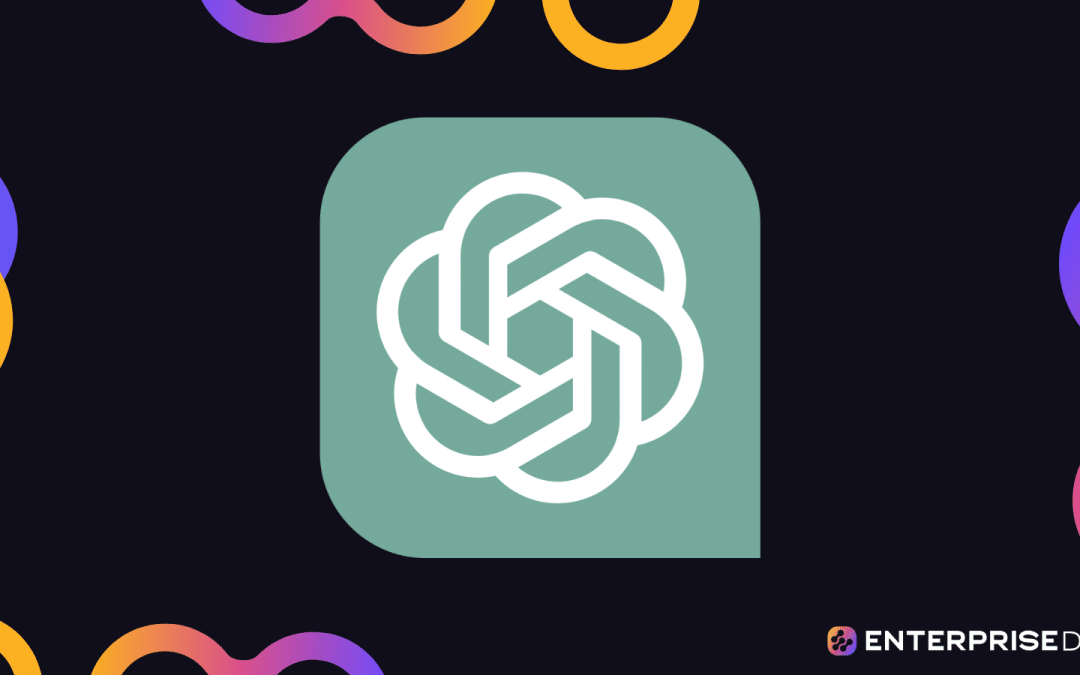The generative AI space is arguably the most exciting space in tech today, and the competition in this arena is fierce.
Currently leading the pack is OpenAI‘s ChatGPT, but if Google’s Bard has anything to say about it, that may not be true for long.
Both of these AI tools are in it to win it, so let’s see who comes out on top in the battle of Bard vs ChatGPT.
Both Bard and ChatGPT are AI language models that use machine learning and natural language processing to generate human-like responses. They are both powered by robust technologies and have a variety of uses. While ChatGPT is the most popular AI chatbot, Bard does tend to be more accurate due to its access to real-time information.
These AI chatbots are powerful tools, but you may find one more helpful than the other, depending on your particular needs. So it’s important to understand the key distinctions between ChatGPT and Bard, as well as their strengths and weaknesses.
This article will give you all the information you need to make the final decision on which AI chatbot is the winning tool for you.
Let’s get started!
(Running low on time to read the full article? Scroll down to get the video version!)
Origins and Development
1. Google Bard
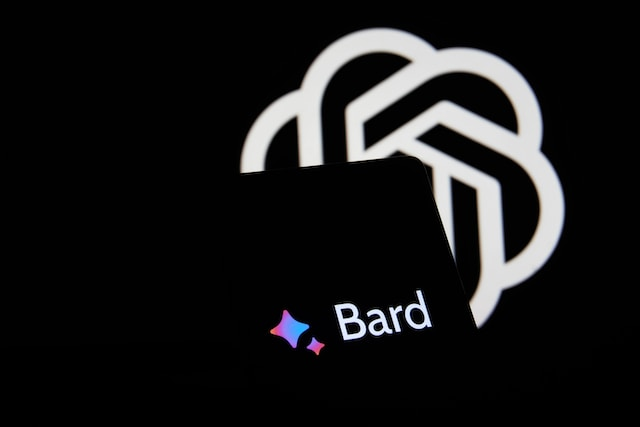
Developed as Google’s answer to ChatGPT, Bard was launched by Alphabet Inc. in March 2023 and has been growing in popularity ever since.
Bard is an advanced conversational AI solution powered by Google’s extensive expertise in machine learning, natural language processing, and other state-of-the-art AI technologies.
Leveraging its rich technical know-how, Google developed Bard to improve the user experience for both individual and business customers.
Also, the chatbot is currently free to use, and there is no premium subscription similar to ChatGPT Plus.
Google is continually working on updates to make this new technology more effective, so we expect the chatbot to grow even stronger and more efficient as time goes by.
2. ChatGPT
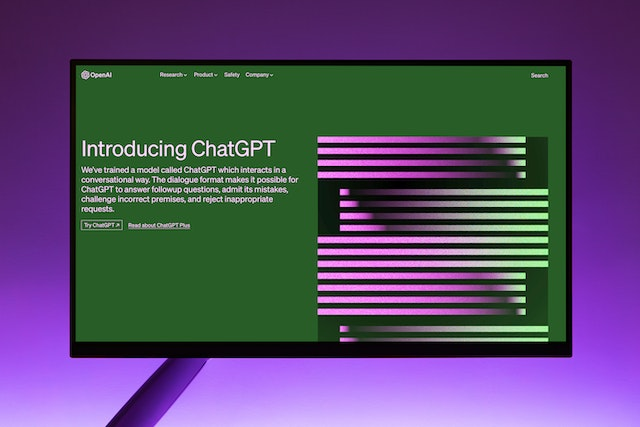
Launched in November 2020, ChatGPT is the brainchild of OpenAI, a research organization focused on AI advancements.
This AI chatbot offers state-of-the-art performance in generating human-like responses and has a wide range of applications, including content creation, programming assistance, and general-purpose chat support.
Since 2020, OpenAI has been working hard to build upon and improve its chatbot, and in March 2023 released GPT-4. GPT-4.
This newer version generates more nuanced text responses and is significantly better than GPT-3.5 at understanding context.
Also, ChatGPT offers a free version that employs GPT-3.5, while GPT-4 is currently only available as part of the ChatGPT Plus subscription plan. There are, however, hopes that GPT-4 will eventually be offered as a free tool.
Now let’s talk about the technologies powering these powerful chatbots.
Technologies Powering Bard and ChatGPT
1. Google’s Bard: LAMDA and Pathways Language Model
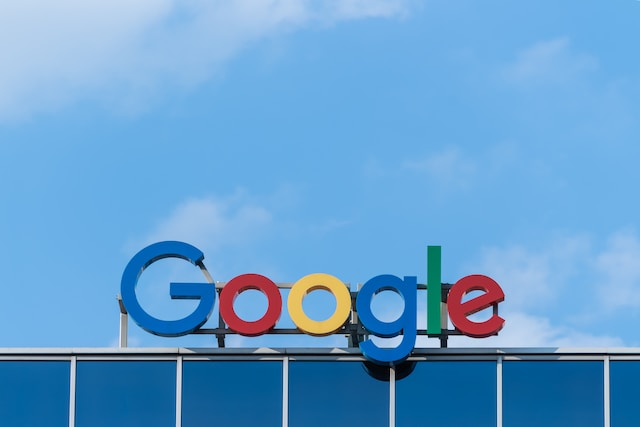
Google’s AI chatbot, Bard, is primarily based on two technologies: LAMDA (Language Model for Dialogue Applications) and the Pathways Language Model.
LAMDA is designed to handle open-domain conversations, enabling the chatbot to engage in multiparty discussions and comprehend complex queries.
It has been trained on vast amounts of internet text, giving it the capability to understand context and generate relevant responses.
The Pathways Language Model, on the other hand, enhances Bard’s ability to include recent events in the conversation.
This model further refines the comprehension and information-processing capabilities of the chatbot, allowing it to stay up-to-date and provide valuable insights.
2. OpenAI’s ChatGPT: GPT-3.5 Turbo and Codex
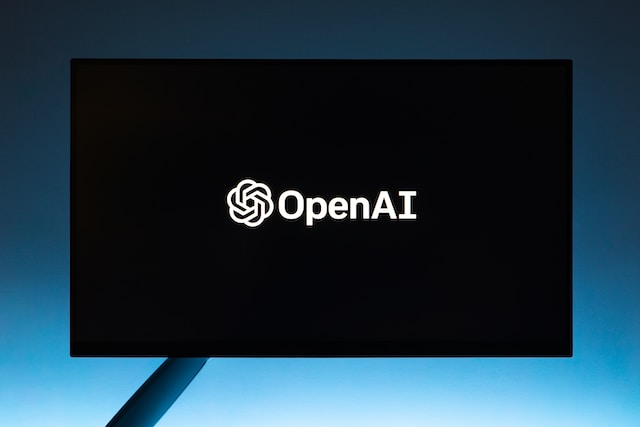
OpenAI’s ChatGPT relies on two core components: GPT-3.5 Turbo and Codex. GPT-3.5 Turbo, being an advanced version of GPT-3, serves as the foundation for ChatGPT.
It has been trained on a massive dataset trawled from the internet, allowing it to produce human-like responses to user inputs.
As a generative model, it can compose coherent and contextually relevant responses, well most of the time, anyway.
Codex, another key component of ChatGPT, is specifically designed for programming-related tasks. It expands ChatGPT’s functionality by improving its abilities in generating code, understanding programming query syntax, and providing solutions to technical problems.
These underlying technologies, combined with OpenAI’s continuous research and development efforts, contribute to ChatGPT’s overall performance and competitive edge in the AI chatbot market.
With such strong technologies backing these AI chatbots, let’s talk about what features they offer.
Bard and ChatGPT Features Explained
Both are extensive, but is there one better than the other?
1. Bard: Features and Capabilities
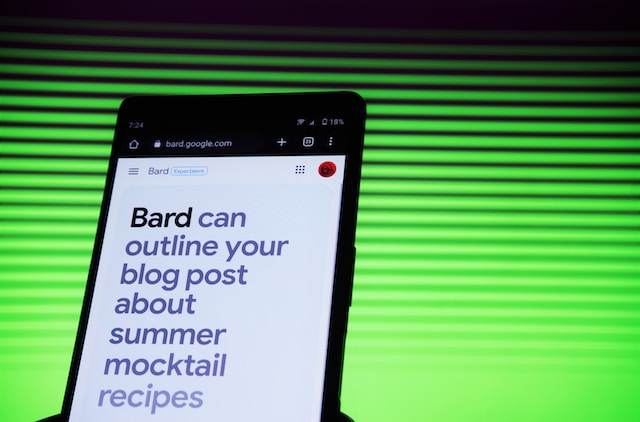
Bard has some pretty powerful features including:
- Multilingual support: Bard can understand and respond in multiple languages, making it accessible to a wider audience.
- Voice input: The chatbot allows you to press its microphone icon and vocalize your prompt.
- Numerous drafts: Bard generates multiple responses to your prompts. Just click ‘View Other Drafts’ to view a variety of drafts for the same prompt.
- Integration with Google services: As a Google product, Bard seamlessly integrates with various Google services and platforms like Google Docs, Google Sheets, and Gmail.
Bard may, however, encounter challenges when dealing with complex logic or out-of-context questions.
2. ChatGPT: Features and Capabilities
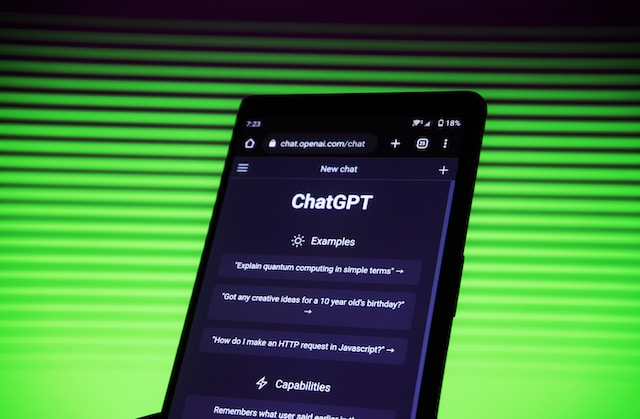
This popular AI chatbot also offers a robust set of features.
A few notable features of this AI language model include:
- Advanced content generation: ChatGPT excels in creating human-like content, making it suitable for multiple writing and ideation tasks.
- Task completion and programming: The chatbot can perform simple tasks and execute commands given in natural language. This includes tasks like arithmetic calculations, generating code snippets, language translation, and more.
- Continuous improvements: OpenAI regularly refines the ChatGPT model to address shortcomings and improve performance.
- Broad application: ChatGPT can be employed in various industries, including content creation, programming, education, and more.
ChatGPT, like Bard, also struggles with some logic issues or misunderstands user queries at times.
Both Bard and ChatGPT have their strengths and weaknesses, with Bard being more research-oriented while ChatGPT is a more versatile content generator and assistant.
Each has its unique set of features and capabilities, catering to different needs and preferences.
Speaking of needs, let’s see how these two chatbots are being used in different sectors and how they match up against each other.
Applications and Use Cases
1. Education

Both ChatGPT and Google Bard are useful for a variety of educational purposes. Both AI chatbots can assist students in understanding complex topics and provide quick explanations when needed. They are also useful in outlining and generating essays and research papers.
Teachers might also employ these chatbots for designing lesson plans or creating educational content. Additionally, ChatGPT and Bard can generate quiz and test questions, making the assessment process more efficient and diverse.
ChatGPT vs. Bard: Students Test
Prompt: Write an essay about the death of Queen Elizabeth II
ChatGPT’s Response:
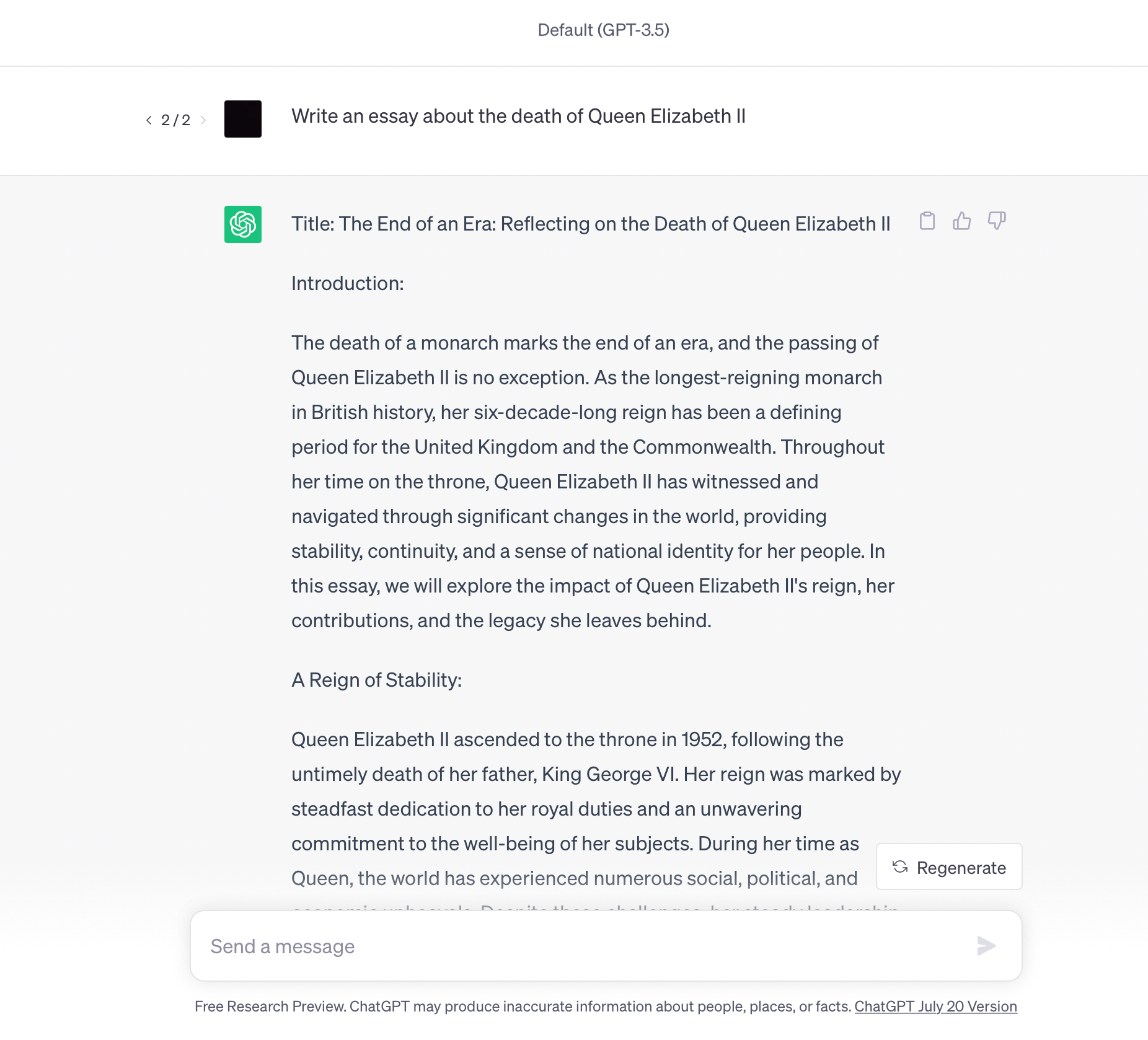
Because of ChatGPT’s information cutoff of September 2021, it did not have information on the Queen’s death in 2022. The essay was therefore based on what the effect of her death WOULD be if it happened.
Google Bard’s Response:
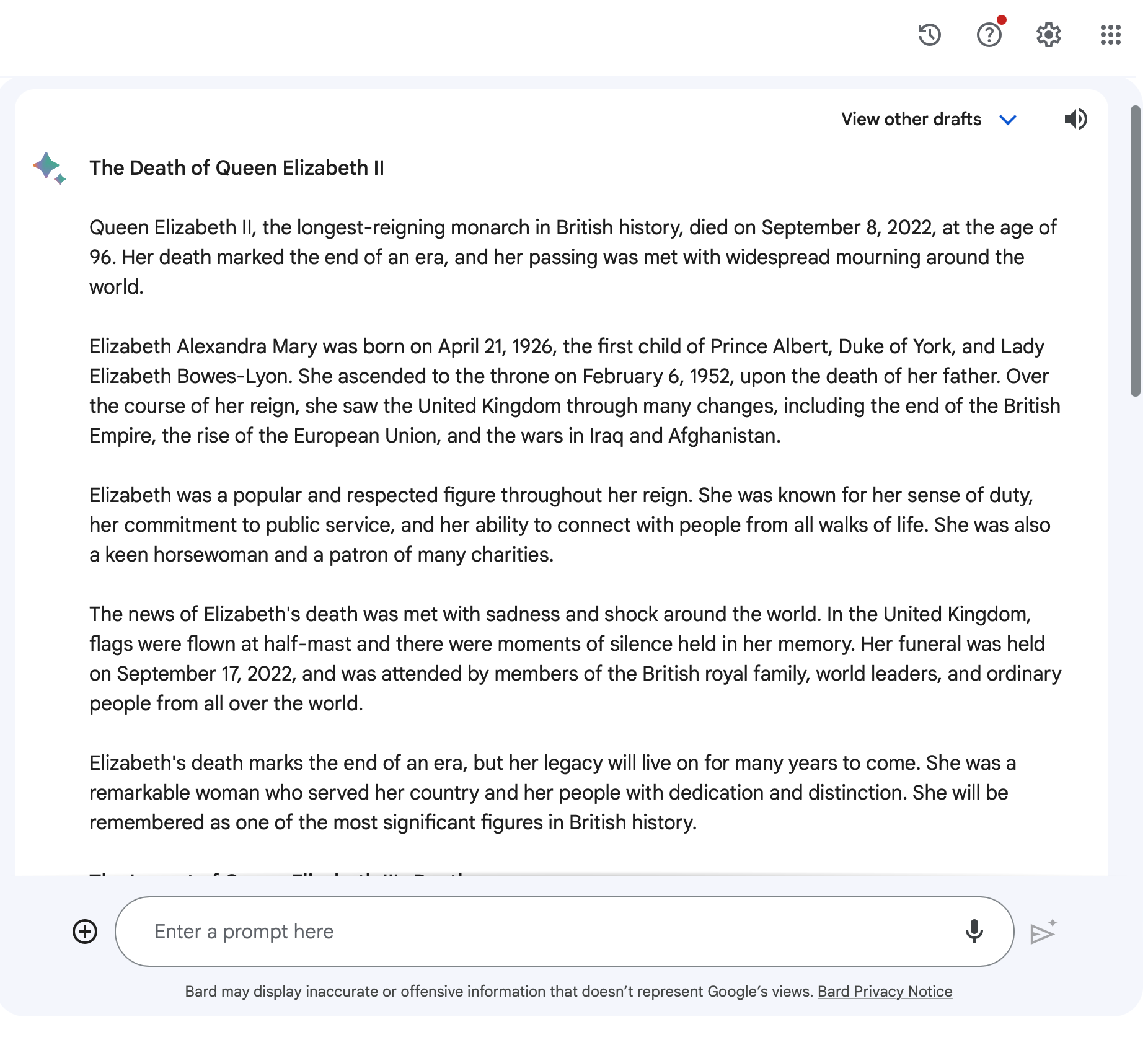
Bard has real-time internet access and was able to generate a current and well-structured essay.
2. Productivity and Writing

In the realm of productivity and writing, both ChatGPT and Google Bard prove to be powerful tools. They can help users draft emails, write reports, and generate content for blogs or social media posts.
By automating parts of the writing process and offering creative suggestions, these AI chatbots save users time and enhance productivity. Furthermore, integration with services like Zapier allows the chatbots to be incorporated into various workflows, simplifying daily tasks and boosting efficiency.
ChatGPT vs. Bard: Draft Email Test
Prompt: Write a polite email to my boss asking for a raise.
ChatGPT’s Response:
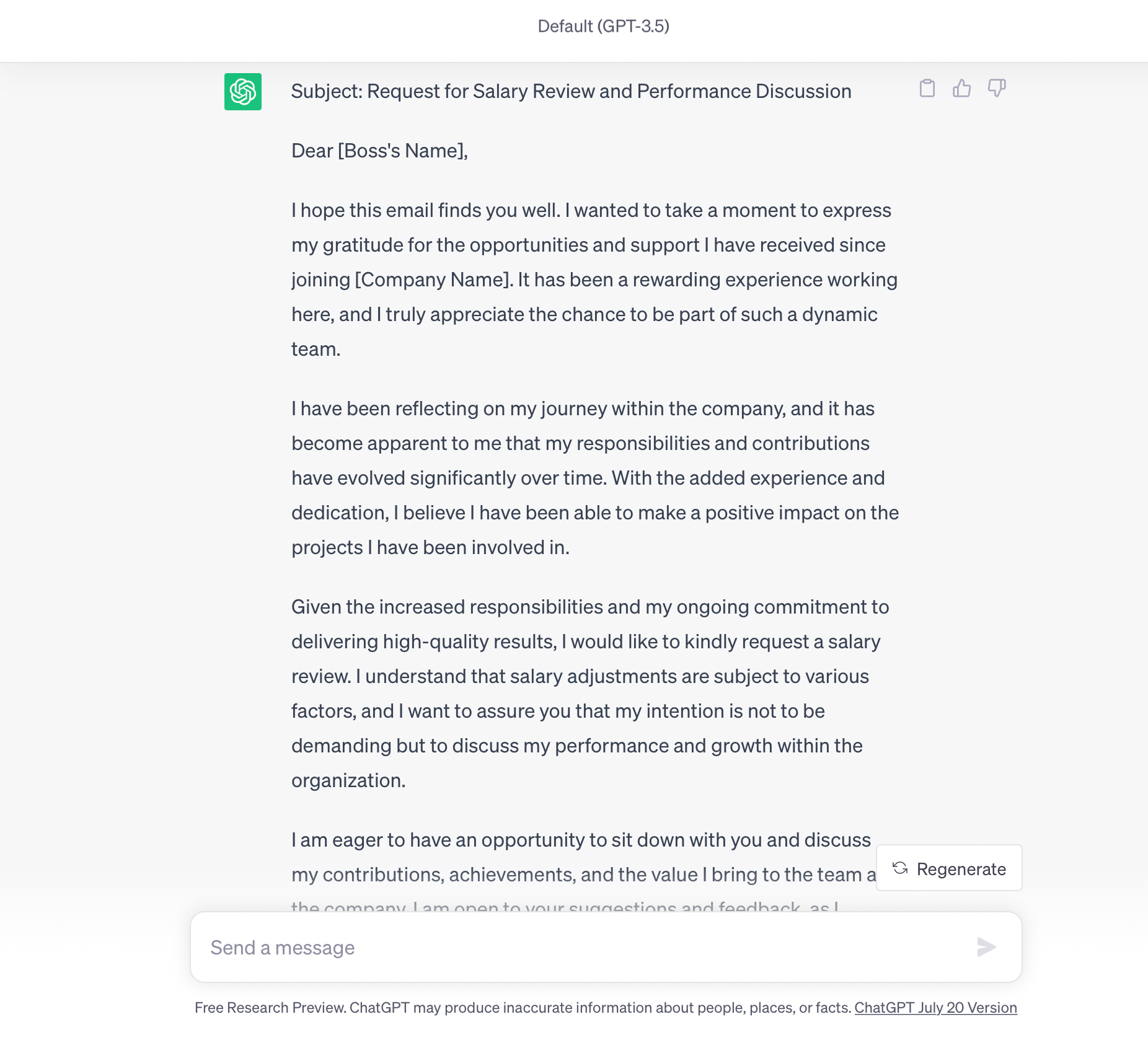
This response was verbose and included a lot of text, which ChatGPT responses are known for, but it did give a more nuanced and ‘polite’ email draft.
Google Bard’s Response:
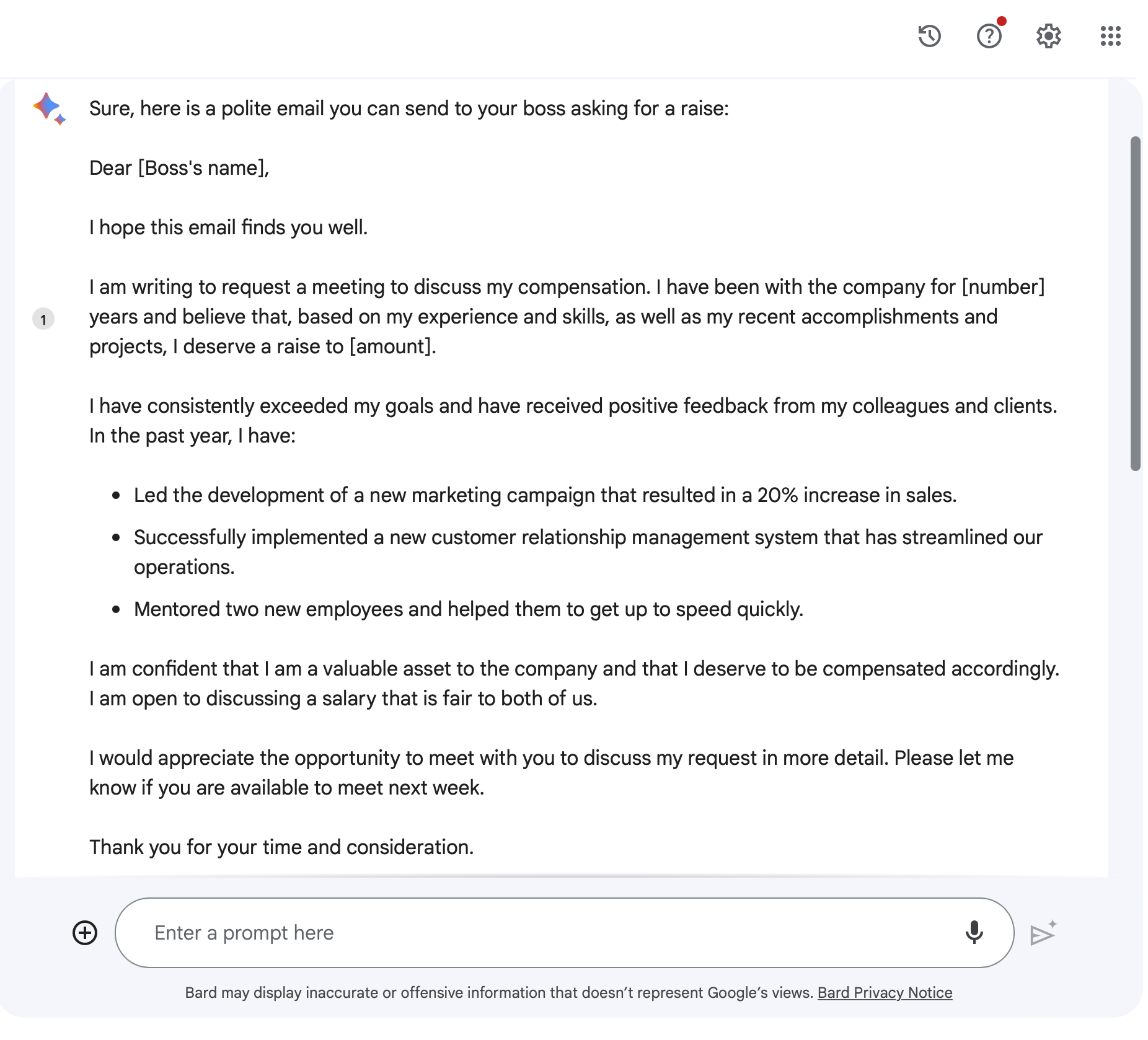
This response was a lot more direct and shorter, but a bit less nuanced.
3. Natural Language Processing and Research

When it comes to natural language processing (NLP) and research, ChatGPT and Google Bard play a significant role.
Their advanced language understanding capabilities enable them to comprehend and analyze large volumes of textual data quickly.
By doing so, these AI chatbots support researchers in uncovering patterns, trends, and insights from data sets, making them valuable tools in NLP and other areas of scientific research.
4. Coding

Both Bard and ChatGPT are useful tools for coding. Developers are using these platforms to generate code in a variety of programming languages, explain code, debug code, and refactor code.
Bard is a new platform, so its coding capabilities are not perfect and may not always be accurate, so you should always double-check when using the platform for coding.
ChatGPT has been used for coding for a lot longer and has a Code Interpreter feature that’s quite useful for programming.
But again, you must remember that ChatGPT does have an information cutoff from September 2021, so advancements in coding beyond that date will not be included in ChatGPT’s code generation.
ChatGPT vs. Bard: Code Generation Test
Prompt: Create a JavaScript code for a game about balloons.
ChatGPT’s Response:
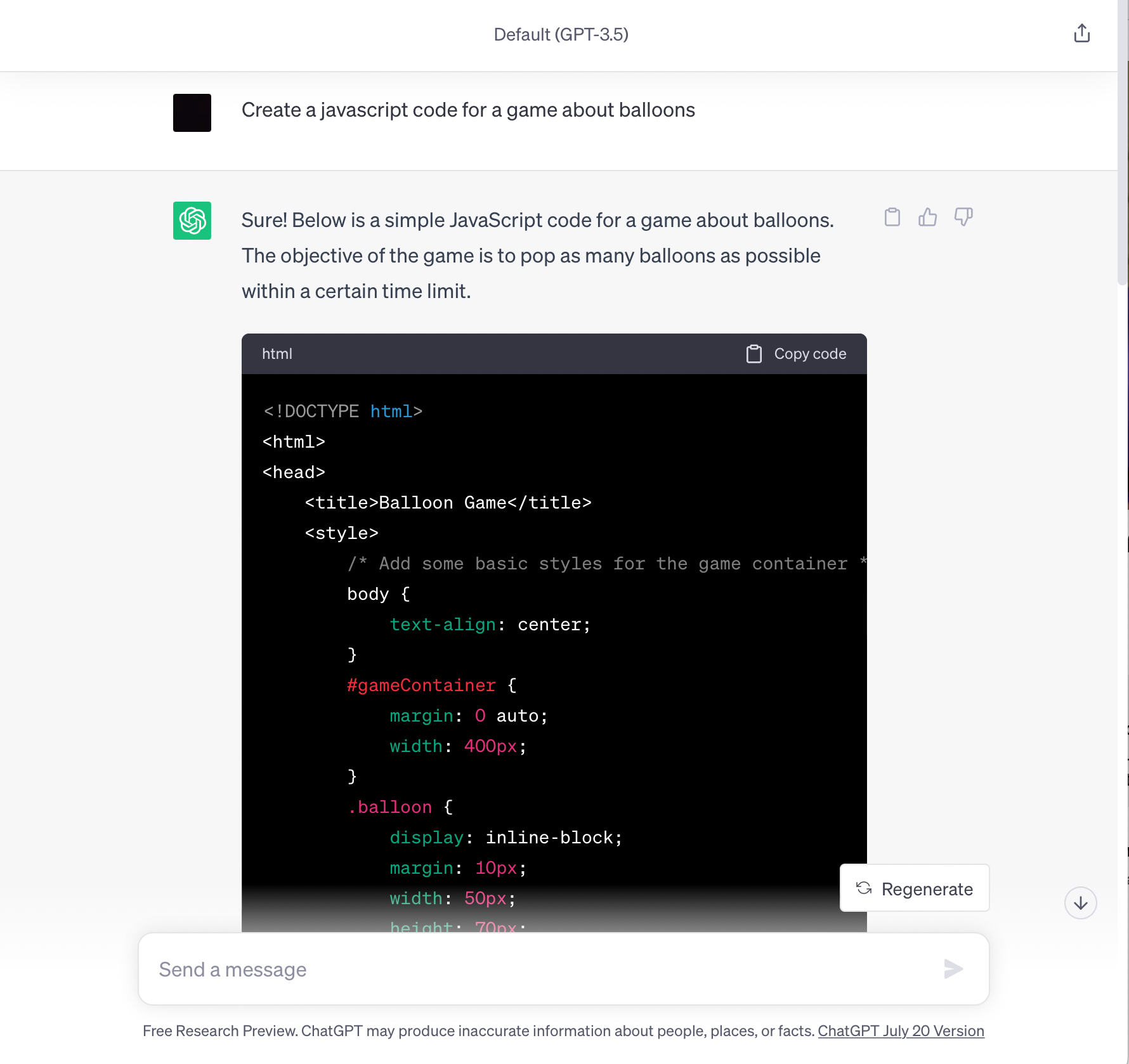
This response gives a simple code for a balloon game.
Google Bard’s Response:
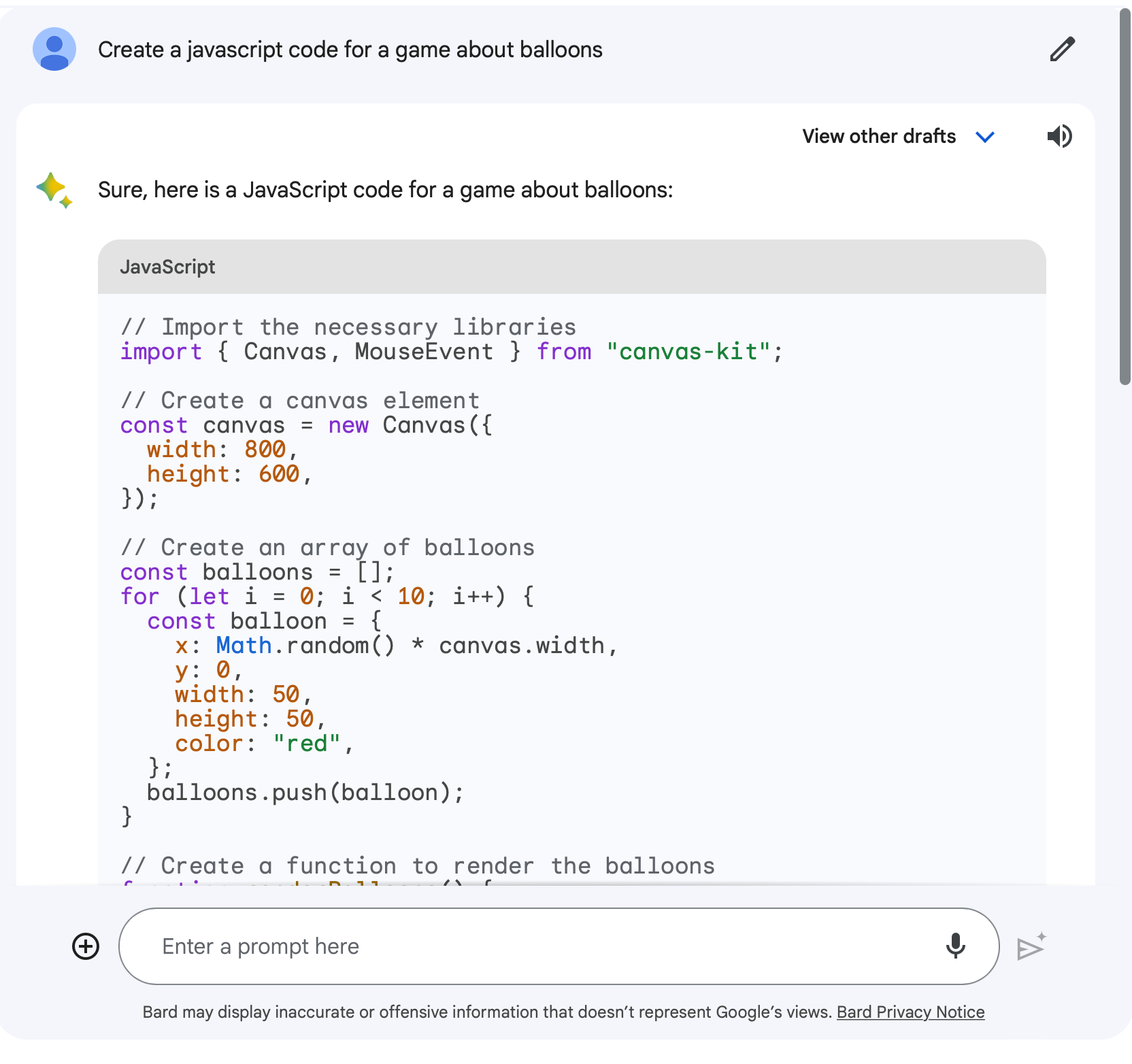
Bard also generated a simple code for a balloon game, but things are a little different.
By now, you should now have a better idea of what these two tools offer and what they are being used for.
Let’s talk about how easily accessible they are to you and the general public.
Access and Pricing for Bard and ChatGPT
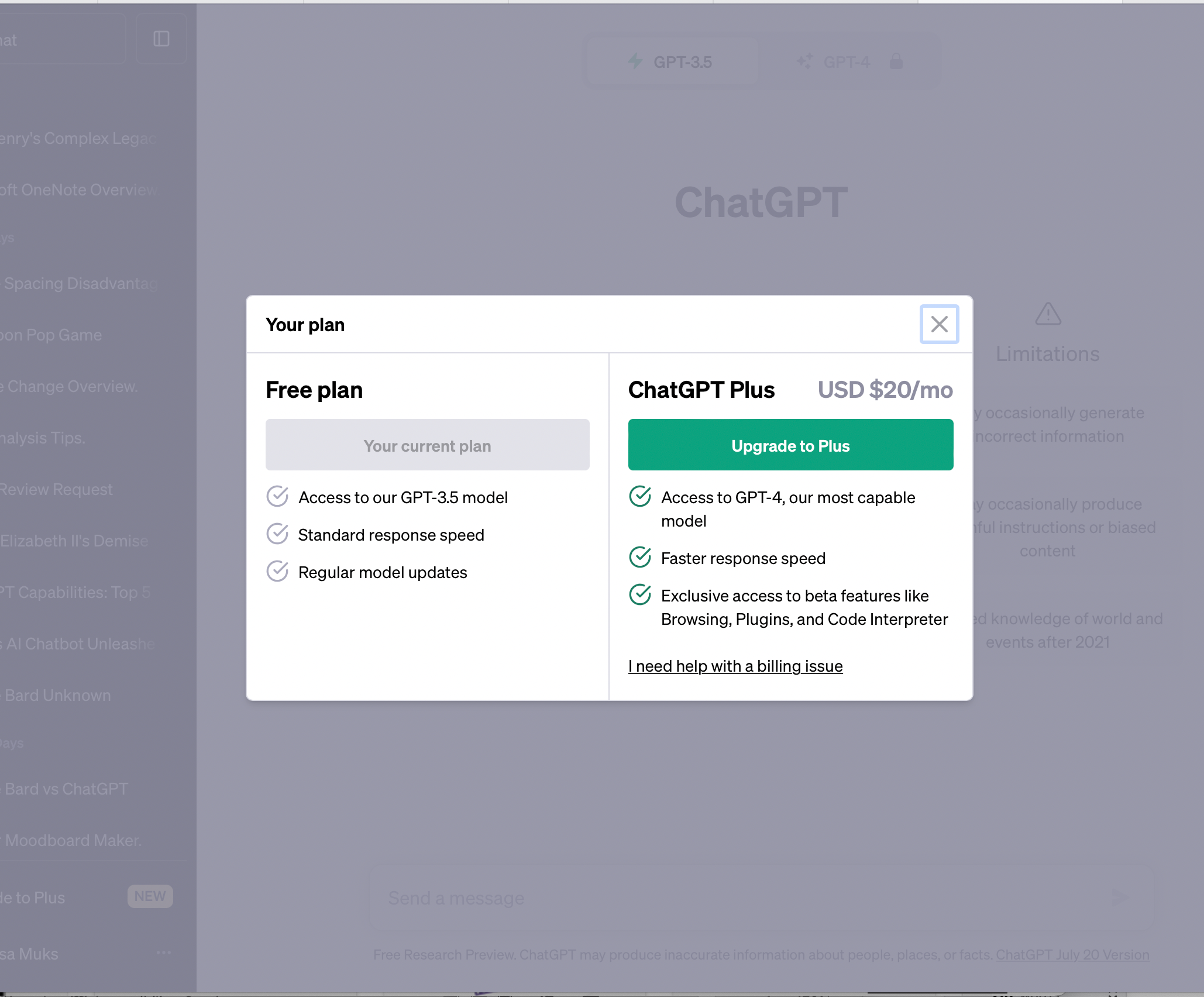
ChatGPT offers free access to all users. However, for a more premium experience, ChatGPT Plus is available for $20/month. Subscribers to ChatGPT Plus enjoy benefits such as:
- Access during peak times
- Faster response times
- Priority access to new features
- Use of GPT-4 technology
As for Google Bard, the service is also free, but you need to have a Google account, which can be set up in a few minutes if you don’t already own one.
With both platforms not having a cost barrier, let’s delve into their strengths and weaknesses to figure out which platform is the most attractive.
Comparison: Strengths and Weaknesses
1. User Interface
Generally, both Bard and ChatGPT offer user-friendly interfaces. However, they do differ slightly. ChatGPT retains previous conversations while Bard does not.
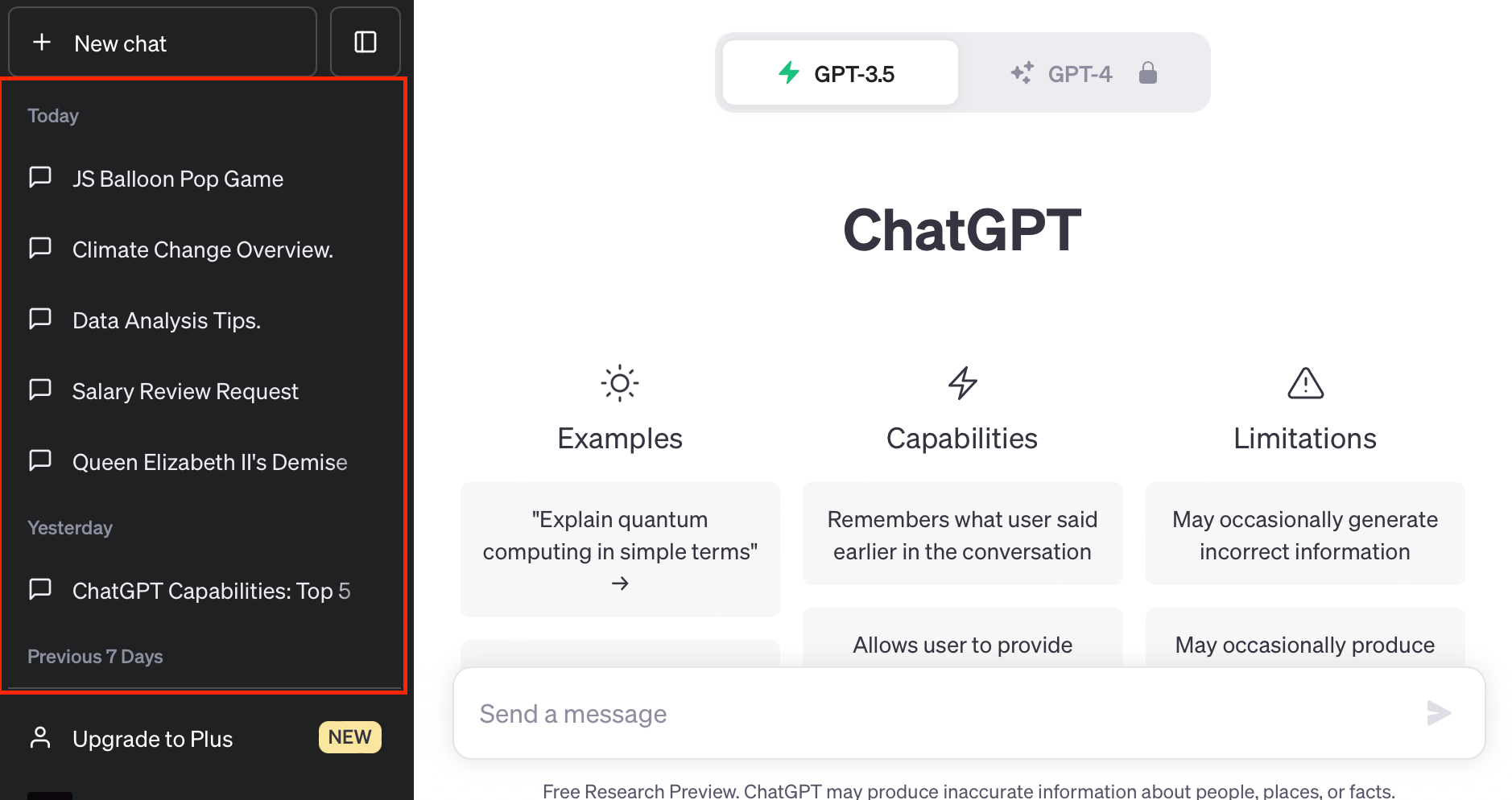
On the other hand, Bard’s responses have more formatted text and are easier to read than ChatGPT’s sometimes bulky text responses. Bard also offers multiple responses to a prompt which is also super helpful.
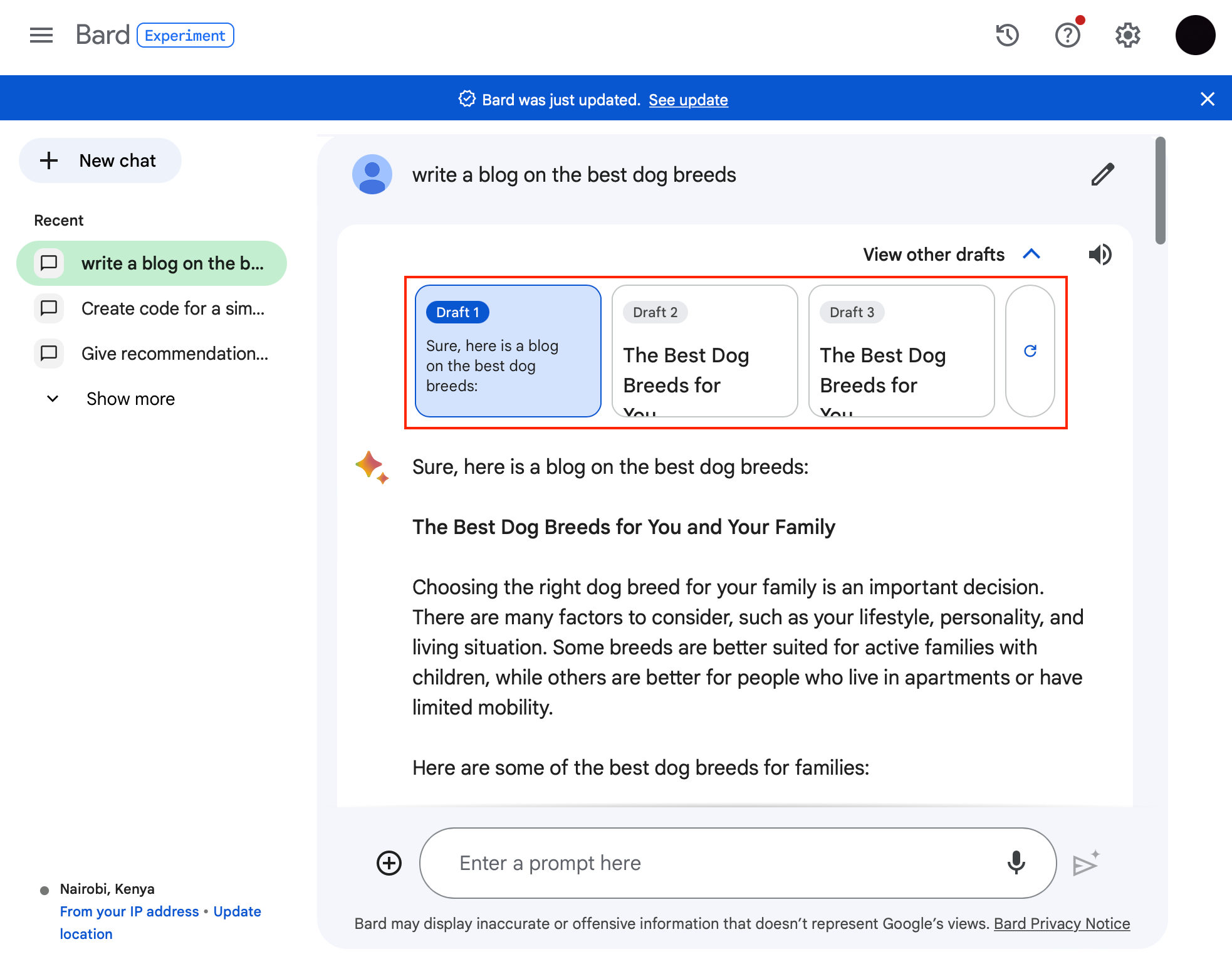
So when it comes to user-friendly interfaces, Bard generally provides a better user experience.
2. Speed and Accuracy

Both ChatGPT and Bard offer fast response times, making them suitable for a variety of use cases.
ChatGPT, powered by OpenAI’s GPT-3 technology, can generate a human-like response based on text inputs and can generate a wide range of text types, including news articles, reviews, and blog posts.
On the other hand, Google’s Bard is more helpful when answering specific questions.
In terms of accuracy, ChatGPT (particularly GPT-4) tends to perform better at generating ideas and creative content, while Bard excels in handling targeted queries.
3. Context and Handling of Complex Topics

ChatGPT has been trained on the Common Crawl and other datasets, equipping it with the capability to understand context and handle complex topics.
However, the large language model sometimes struggles to maintain context over long conversations or provide satisfactory responses to ambiguous queries.
Bard’s responses, conversely, benefit from Google’s extensive knowledge base to provide accurate and relevant information, especially when dealing with specific questions or factual content.
While both AI-powered text generators offer context-aware capabilities, Bard seems to excel in handling the intricacies of complex topics.
4. Bias and Misinformation

Since both ChatGPT and Bard are trained on large datasets from the internet, they may inadvertently inherit biases and misinformation present in their training data.
It’s essential for you to be aware of these potential pitfalls and to critically evaluate the generated content for accuracy and potential biases.
To mitigate these issues, both OpenAI and Google invest in improving their models and reducing biases.
However, they may not be perfect yet, and you should remain cautious when utilizing these tools for sensitive content or critical decisions.
5. Plug-Ins and Integrations
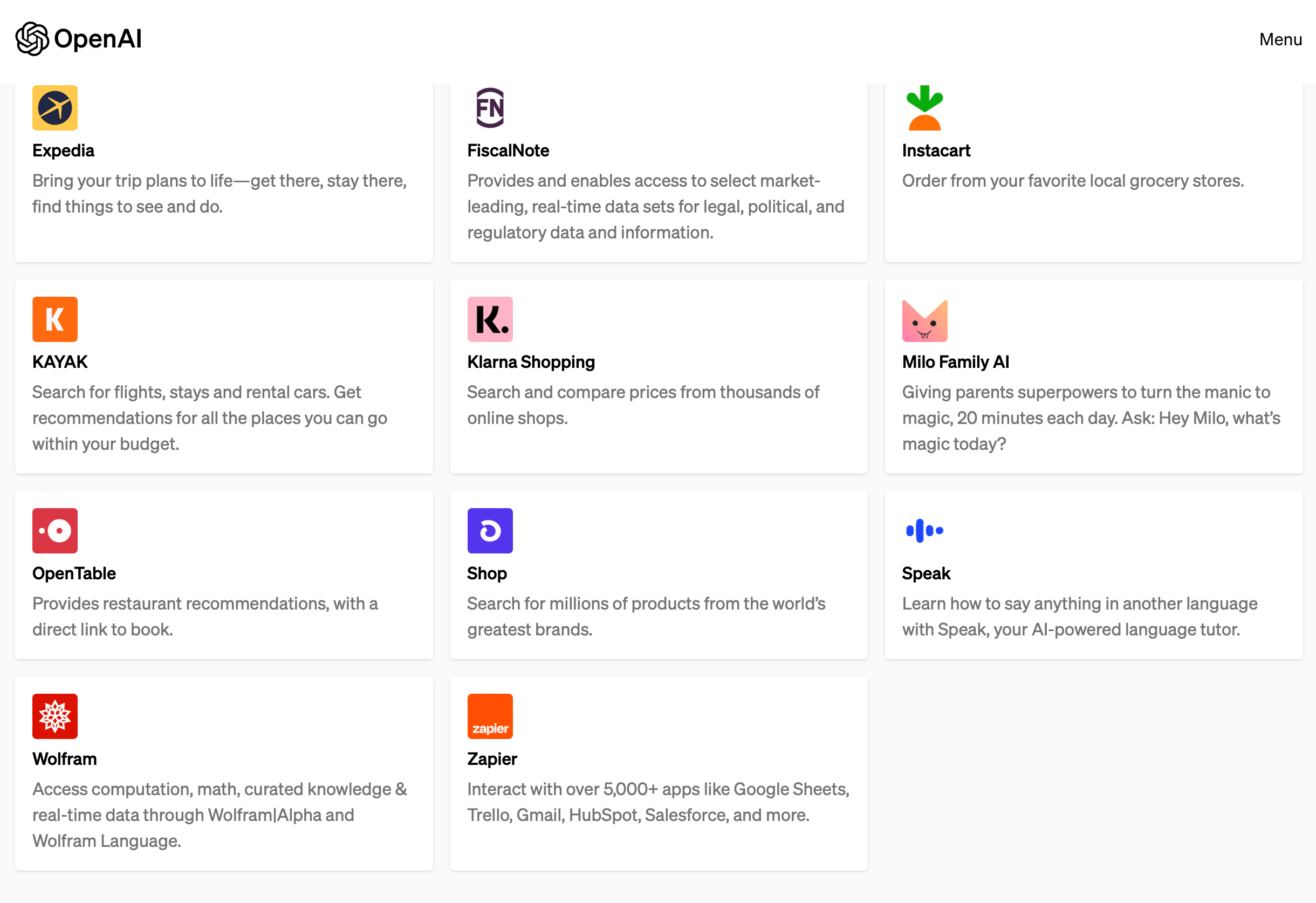
Both ChatGPT and Google Bard offer API access, allowing developers to integrate their advanced conversational capabilities into various applications.
These AI-powered chatbot tools can be accessed and utilized by providing your email address during registration and creating the necessary accounts.
Some of Bard’s most popular integrations include Google Workspace, Slack, GitHub, and Adobe Creative Cloud.
Also, there had been an expectation that Bard would integrate with Google Search, but Google has decided to keep the chatbot and the search engine separate for now.
ChatGPT, on the other hand, also has popular integrations with tools like Microsoft Excel and Teams, Discord, and Facebook Messenger.
Is there a day when a new integration doesn’t get released at the moment?
All in all, ChatGPT has a far more extensive list of integrations and plugins on offer, but with Bard growing and developing, Bard should be able to eventually catch up.
So, Which Chatbot is Better: ChatGPT or Bard?

It depends.
ChatGPT and Google Bard are both powerful AI chatbots offering impressive functionalities and conversation skills.
In terms of factual accuracy, both chatbots fare well, providing users with generally reliable information.
For workplace applications, the choice between ChatGPT and Bard depends on the specific organizational needs and requirements. While they have comparable capabilities, their parent companies’ ecosystems may influence the final decision.
Ultimately, you should compare and assess both tools side by side to determine which one aligns with your desired objectives.
Most of all, have fun doing it!
Frequently Asked Questions
What are the key differences between Bard and ChatGPT?
Bard is primarily built for research purposes, while ChatGPT is more focused on writing tasks. Both AI systems have their strengths and weaknesses, and they might respond differently to the same queries or run into errors in logic.
Since ChatGPT is based on the GPT-3.5 language model, it’s designed to excel at understanding and generating human speech, whereas Bard aims to provide more accurate, relevant, and readable output.
Which AI performs better: Bard or ChatGPT?
Performance is subjective and may vary depending on the specific task. ChatGPT tends to be more proficient at generating human-like text and more detailed writing assignments.
On the other hand, Bard, being a Google product, might deliver better accuracy and readability within a conversation. It is crucial to evaluate the AI systems according to your specific needs and goals.
What are the advantages of using Bard instead of ChatGPT?
Potential advantages of using Bard over ChatGPT include more up-to-date answers, more relevant responses, and improved readability in a conversational context.
As a Google product, Bard may also integrate more seamlessly with other Google services and tools.
How can I access Bard and ChatGPT?
To access ChatGPT, you can visit OpenAI’s platform through their website. For Bard, you can access it via Google’s Bard Homepage. You will need a personal Google account to access Bard.
What are the costs associated with Bard and ChatGPT?
Pricing for both Bard and ChatGPT can vary. OpenAI offers different plans for ChatGPT, including a free tier with some limitations and premium plans for more extensive access.
Bard is currently offered for free and does not currently have a premium plan option.
How does Bard compare to GPT-4 and ChatGPT?
GPT-4 is an upgraded version of the Generative Pre-trained Transformer language model used in ChatGPT, offering better performance in specific tasks.
As for Bard, it serves a slightly different purpose focused primarily on research and aims to provide more accurate responses.
Comparing the models, it is essential to understand your requirements and the specific features of each AI system to decide which one is most suitable for your use case.







